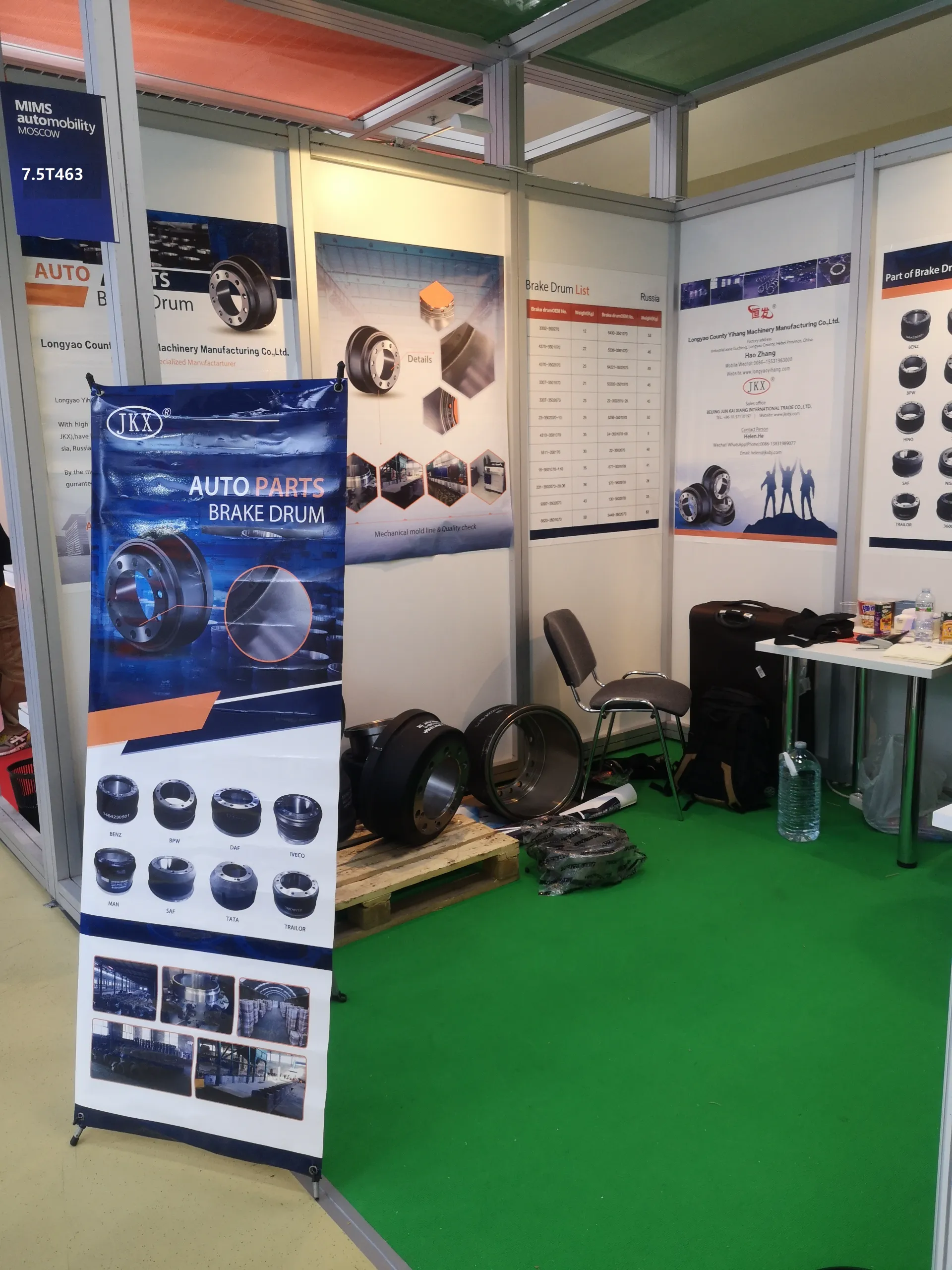Dec . 06, 2024 23:21 Back to list
heavy duty brake drums
Understanding Heavy Duty Brake Drums Importance, Features, and Maintenance
Heavy-duty brake drums play a crucial role in the safety and performance of large vehicles, including trucks, buses, and trailers. As a critical component of the braking system, they are designed to withstand substantial loads and high-stress conditions, ensuring effective stopping power in various driving situations. This article explores the importance of heavy-duty brake drums, their features, and tips for maintenance to ensure optimal performance.
Importance of Heavy Duty Brake Drums
Brake drums are integral to drum brake systems, where they work in conjunction with brake shoes to convert kinetic energy into thermal energy through friction. Heavy-duty brake drums are engineered specifically for larger, more powerful vehicles that experience increased wear and tear due to their weight and the demanding conditions they often operate under. The importance of these components can be outlined in several key areas
1. Safety Reliable stopping power is crucial for heavy vehicles. A malfunctioning brake drum can lead to catastrophic failures, risking the lives of the driver, passengers, and other road users. Heavy-duty brake drums are designed to provide consistent performance under high-temperature conditions, helping to maintain vehicle control during emergencies.
2. Durability Given the rigorous demands placed on heavy-duty vehicles, brake drums must be constructed from robust materials that can endure harsh environments, including extreme temperatures and heavy loads. The longevity of these components is essential for reducing maintenance costs and improving vehicle uptime.
3. Performance Heavy-duty brake drums contribute to the overall performance of a vehicle. They facilitate smoother braking and can improve overall vehicle handling, leading to enhanced safety and driving comfort.
Features of Heavy Duty Brake Drums
Several features distinguish heavy-duty brake drums from their lighter counterparts
1. Material Composition Heavy-duty brake drums are typically made from high-strength cast iron or composite materials that provide better heat dissipation and resistance to warping. Some modern designs use advanced materials, such as aluminum alloys, which reduce weight without compromising strength.
heavy duty brake drums

2. Design Many heavy-duty brake drums feature ventilation holes or fins that enhance cooling during operation. This cooling reduces the risk of brake fade, which can occur when the brakes overheat, leading to decreased stopping power.
3. Size and Weight The larger diameter and wider design of heavy-duty brake drums increase the surface area for friction, allowing for better braking capability. However, these drums also weigh more, necessitating a careful balance between performance and vehicle weight considerations.
Maintenance Practices
To ensure the longevity and reliability of heavy-duty brake drums, regular maintenance is essential. Here are some tips for proper care
1. Regular Inspections Conduct routine checks on brake components, including the drums, shoes, and linings. Look for signs of wear, scoring, or cracks that might indicate a need for replacement.
2. Cleaning Dirt, grease, and debris can accumulate on brake drums, affecting performance. Regular cleaning removes contaminants and helps maintain optimal braking efficiency.
3. Proper Adjustment Ensure that the brake shoes are adjusted correctly to maintain even contact with the drum. Improper adjustment can lead to uneven wear and premature failure.
4. Monitor Brake Pads Always keep an eye on the condition of brake pads. Worn pads can damage the drum surface, leading to costly repairs and reduced braking efficiency.
5. Heat Management Be mindful of the brake temperature during operation, especially in heavy stop-and-go traffic. Taking breaks during long hauls can help cool the braking system.
In conclusion, heavy-duty brake drums are pivotal for maintaining the safety and efficiency of large vehicles. By understanding their significance, recognizing key features, and adhering to maintenance best practices, operators can ensure these critical components function effectively, thereby enhancing overall vehicle performance and safety on the road.
-
Volvo Brake Drum: OEM Quality, Optimal Safety
NewsAug.27,2025
-
Durable Brake Drum MAZ for Heavy Duty Trucks | High Performance
NewsAug.26,2025
-
FUWA: Premium Quality, Reliable Performance & Innovative Solutions
NewsAug.25,2025
-
Liza Brake Drum: Superior Quality & Performance for Safe Driving
NewsAug.24,2025
-
Iveco Brake Drum | Premium OE Quality for Daily & Eurocargo
NewsAug.22,2025
-
Your Brake Drum Man: Quality & Performance Parts
NewsAug.21,2025
